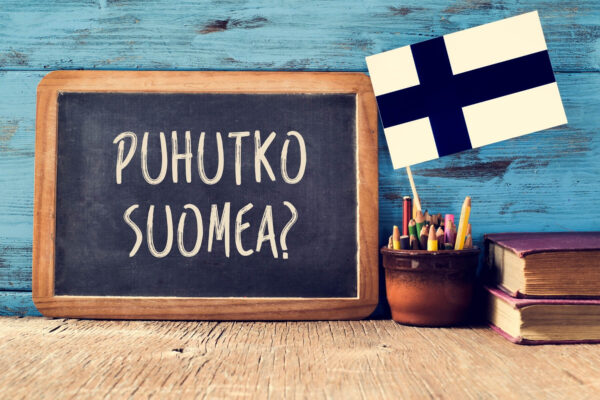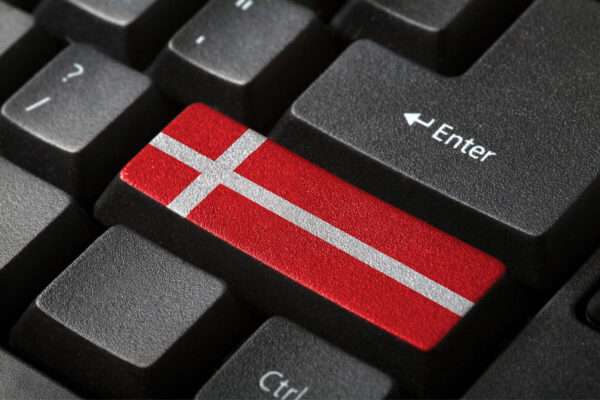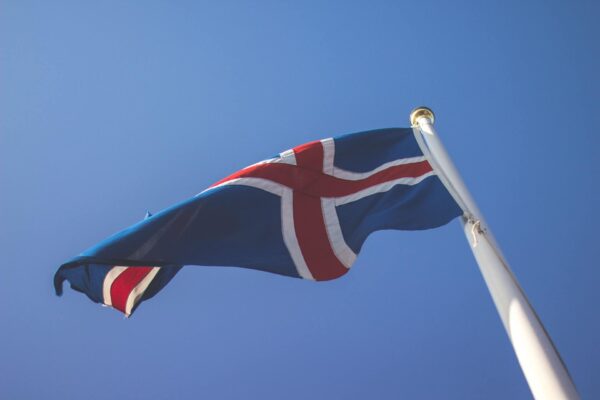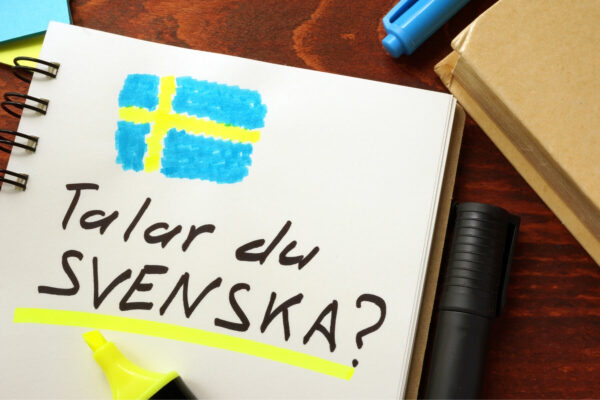Are you thinking about learning Norwegian? If you want to find out whether the Scandinavian language is for you, you’ll find vocabulary lessons for beginners, an introduction to grammar and tips on how best to learn the language, both online and offline.
Norwegian (norsk) is a Scandinavian language from the North Germanic branch of the Indo-European language family. The two standard varieties of Norwegian are Bokmål and Nynorsk.
| Own designation | norsk |
|---|---|
| Language origin | Old Norse |
| Native speakers | 5 million |
| Official language in | Norway |
| Varieties and dialects | two recognised (written) varieties, four large dialect areas |
Learn Norwegian – Lesson 1: basic vocabulary and grammar
Basic vocabulary
| Hello! | Hei! |
| Good day! | God dag! |
| Goodbye! | På gjensyn! |
| Bye bye! | Hade! |
| yes | ja |
| no | nei |
| thank you | takk |
| Sorry | Unnskyld |
| Excuse me? | Hva for noe? |
The pronouns
| i | jeg |
| you | du |
| he | han |
| she | hun |
| it | det |
| we | vi |
| you | dere |
| they | de |
Introduce yourself
| What is your name? | Hva heter you? |
| My name is … | Jeg heter … |
| Where are you from? | Hvor kommer du fra? |
| I come from Great Britain. | Jeg kommer fra Storbritannia. |
| I live in … | Jeg bor i … |
| I am … years old. | Jeg är … år gammel. |
| How old are you? | Hvor gammel er du? |
| I work as a … | Jeg jobber som … |
| And you? | Og you? |

Basic grammar rules: what you should know
- Capitalisation and lower case: In Norwegian, as in Swedish, almost everything is written in lower case. Exceptions are the beginnings of sentences and proper nouns.
- Sentence order: Norwegian is also a verb-second language. This means that the verb comes second, after the subject. In a simple sentence, this is followed by the object.
- Genus and article: Norwegian has three grammatical genders. However, there are differences between the different language variants. Some dialects recognise only two genders, the uterine and the neuter. Nynorsk is particularly well known for using three genders. The article en is used for the masculine, ei for the feminine and et for the neuter, just as for the utrum.
- Declension of adjectives: In Norwegian, there are weak and strong adjectives, which are inflected differently. There are also irregular adjectives whose declension must be learnt.
- Conjugation and tenses: The conjugation of verbs differs depending on whether it is Nynorsk or Bokmål. In Bokmål, only an -r is added to the infinitive in the present tense, while in Nynorsk, depending on the ending, -r, -ar or no ending is added. Various tenses are formed in a similar way to English. For example, there is a form for the preterite and the perfect and past perfect tenses are formed with an auxiliary verb.
Vocabulary trainer: Basic vocabulary



Learn Norwegian – Lesson 2: all the vocabulary you need for your holiday
On holiday
| On holiday | på ferie |
| Airport | (en) flyplass |
| Hand luggage | (en) håndbagasje |
| Suitcase | (en) koffert |
| Rucksack | (en) ryggsekk |
| Cash dispenser | (en) minibank |
| book | (å) booke |
| Passport | (et) pass |
| Hotel | (et) hotell |
| Reception | (en) resepsjon |
| Floor / Etage | (en) etasje |
| Holiday home | (en/et) hytte |
| Old town | (en) gamleby |
| Bicycle | (en) sykkel |
| Train | (et) tog |
| Ticket | (en) billett |
| City map | (et) bykart |
| Museum | (et) museum |
| hike | (å) gå tur |
| camp | (å) campe |
| swim | (å) svømme |
Emergency
| Emergency | (en) nødstilfelle |
| Emergency call | (et) nødanrop |
| Help! | Hjelp! |
| Hospital | (et) sykehus |
| Pharmacy | (et) apotek |
| Doctor | (en) lege |
Vocabulary trainer: Holiday and emergency


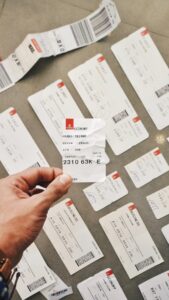
Norwegian pronunciation: what you need to know
Norwegian pronunciation is not standardised. There is no “High Norwegian” that is used in public. For example, different dialects are spoken on television, depending on where the actors come from.
Norwegian special characters: how do you pronounce å, ø and æ?
The Norwegian language contains some letters that do not appear in the English alphabet, namely å, ø and æ. Norwegian learners often wonder how to pronounce these letters. The å is pronounced like a soft o or the au in “aunt”, the ø like a German ö or a French œ, and the æ like the a in the word “bad”.
Ordering and shopping
| order | (å) bestille |
| Restaurant | (en) restaurant |
| Café | (ett) kafé |
| I would like to have … | Jeg vil gjerne ha … |
| Bon appétit! | Vel bekomme! |
| Cheers! | Skål! |
| Breakfast | (en) frokost |
| Lunch | (en) lunsj |
| Dinner | (en) middag |
| It tastes very good. | Det smaker veldig bra. |
| Can I have the bill, please? | Kan jeg få regningen? |
| May I pay, please. | Kan jeg betale, takk! |
| go shopping | (å) handle |
| Shop / shop | (en) butikk, (en/ei) forretning |
| Supermarket | (et) supermarked |
| Fruit and vegetables | frukta och grønnsaka |
| Milk | (en/ei) milk |
| Meat | (et) kjøtt |
| Fish | (en) fisk |
| Bread | (et) brød |
| Water | (et) vann |
| Coffee | (en) kaffe |
| Beer | (et) øl |
| Wine | (en) vin |
| (Norwegian) alcohol trade | Vinmonopolet |
| Clothing shop | (en) klesbutikk |
| Cash register | (en/ei) kassa |
| Bag | (en) pose |
| Where can I find … ? | Hvor kan jeg finne … ? |
| How much does it cost? | Hvor mye er det? |

Orientation: finding your way around and asking for directions
| Orientation | (en/ei) orientering |
| Entrance | (en) inngang |
| Exit | (en) utgang |
| Toilet | (et) toalett |
| Tourist information centre | (en) turistinforamasjon |
| Railway station | (en) jernbanestasjon |
| Bus stop | (en) bussholdeplass |
| Post office | (et) postkontor |
| Street | (en) vei |
| Petrol station | (en) bensinstasjon |
| Exit | (en) avkjøring |
| Car park | (en) parkeringsplass |
| Car park machine | (en) minibank |
| Crossroads | (en/ei) krysning |
| Motorway | (en) motorvei |
| Roundabout | (en/ei) rundkjøring |
| Bridge | (en/ei) bro |
| Excuse me, I have a question. | Unnskyld, jeg har et spørsmål. |
| Excuse me, can you repeat that? | Unnskyld, kan du gjenta det? |
| Where can I find … ? | Hvor kan jeg finne … ? |
| Where is … ? ? | Hvor er … ? |
| I am looking for … | Jeg ser etter .. |
| How do I get there? | Hvordan kommer jeg dit? |
| How far is it to … ? | Hvor langt er det til … ? |
| I got lost. | Jeg har mistet veien. |
| You have to turn right/left. | Ta till höger/vänster. |
| Go straight ahead. | Gå videre. |
| behind | bak |
| beside | ved siden av |
| I would like to have a ticket from Bergen to Oslo. | Jeg vil gjerne ha en billett fra Bergen til Oslo. |
Learn Norwegian pronunciation
Norwegian pronunciation is not standardised. Although there are general pronunciation rules, their application varies from region to region. This is why it is important that you choose a learning source that works with voice recordings. Alternatively, you can also opt for a language course. The important thing is that you hear someone speak and learn a dialect consistently.
General pronunciation rules
- The r is usually rolled in Norwegian. In some dialects, however, the r is pronounced harder.
- S is always unvoiced
- V is always pronounced softly, like a w or the v in vase.
- Sj and skj are pronounced like sh in short
- Kj is pronounced like ch in ich.
- Rs is pronounced like sch in some dialects.
- Eg is pronounced like ey, for example in the pronoun jeg.
- O is often pronounced like u .
Vocabulary trainer: on the road

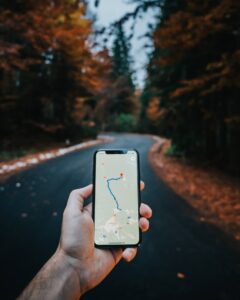

Learn Norwegian – Lesson 3: more everyday vocabulary
Weather
| Weather | (et) vær |
| Weather forecast | (en/ei) værvarsling |
| Temperature | (en) temperatur |
| Degree | (en) grad |
| Degrees below zero | kuldegrader |
| Sun, sunny | (en/ei) sol, solrik |
| blue sky | (en) blå himmel |
| Rain, rainy | (en) regn, regnfull |
| Wind, windy | (en) vind, luftig |
| Snow | (en) snø |
| Ice, icy | (en) is, islagt |
| Frost | (en) frost |
| Hail | (et) hagl |
| Fog, foggy | (en/ei) tåke, tåket |
| Clouds, overcast | (en/ei) sky, overskyet |
| Storm | (en) storm |
| Thunderstorm | (et) uvær |
| Lightning | (et) lyn |
| Thunder | (en) torden |
| wet | våt |
| moist | fuktig |
| dry | tørr |
| slick | glatt |
| warm | varm |
| cold | kald |
| Season | (en/ei) årstid |
| Spring | (en) vår |
| Summer | (en) sommar |
| Autumn | (en) høst |
| Winter | (en) vinter |
The history of the Norwegian language: why is there no standard Norwegian?

The Norwegian language is derived from Old West Norse, from which Icelandic and Norwegian developed. Swedish and Danish also derive from Old Norse, but are not quite as closely related to Norwegian as Icelandic.
What is special about the development of the Norwegian language is that no standard language developed from local varieties. This is partly due to the geographical conditions of the country, which made communication between the different parts of the country difficult.
In the course of the unification with Denmark from 1380 to 1814, Norwegian was partly replaced by Danish. Only in the countryside the various Norwegian dialects were still spoken. It was not until the 19th century, after the separation from Denmark, that a debate about the Norwegian language arose .
Nynorsk: the dialectal variant
It was Ivar Aasen, a Norwegian poet and linguist, who finally developed a language variant called Landsmål in 1850, which was renamed Nynorsk in 1929. The aim was to develop a written language for the dialects of the population, as only the written Danish language was in use at the time.
Bokmål: especially favoured in cities
Around the same time, a Norwegian teacher, Knud Knudsen, developed today’s Bokmål, which was adopted by parliament in 1862. Today, around 85 per cent of Norwegians prefer Bokmål, even though Nynorsk must be taken at many schools as well. In public institutions such as universities, every citizen is free to choose their language variant.
Numbers: Counting to ten in Norwegian
| one | en/ett |
| two | to |
| three | tre |
| four | fire |
| five | fem |
| six | seks |
| seven | sju/syv |
| eight | åtte |
| nine | ni |
| ten | ti |
Days of the week
| Weekday | (en) ukedag |
| Monday | mandag |
| Tuesday | tirsdag |
| Wednesday | onsdag |
| Thursday | torsdag |
| Friday | freday |
| Saturday | lørdag |
| Sunday | søndag |
Learn Norwegian pronunciation: 3 tips
- Choose a learning source that works with audio examples or a language course.
- Repeat examples and record them. This will help you to hear what you still need to work on.
- Listen to Norwegian radio or watch Norwegian television. This will help you familiarise yourself with different dialects.
Vocabulary trainer: weather, numbers, days



FAQ: Should I learn Norwegian?
Norwegian is one of the more grammatically complex Scandinavian languages. How difficult it is to learn the language depends on which variant you learn. Most courses offer Bokmål, but there are also some providers where you can learn Nynorsk.
If you are faced with the decision of whether to learn Norwegian or Swedish, it is advisable to get a rough overview of both languages. Swedish is a little less complex and you don’t have to worry about different dialects. On the other hand, Norwegian is very diverse and you can decide which language variant and dialect you would like to learn.
Would you like to improve your Norwegian?
Have you decided to improve your Norwegian or would you like to test different learning sources first? No problem! Below we have put together a few ways in which you can easily learn Norwegian yourself. Of course, you can also use all the programmes and books to supplement a language course that you have taken locally.
Learn Norwegian online: interactive self-study
If you want to learn Norwegian interactively and be guided through the course from start to finish, a language learning app is the right choice for you. There are both free and paid alternatives that differ in terms of what they offer.
Learn Norwegian with books
If you also want to learn Norwegian offline, books can help. Dictionaries, for example, are a good addition, no matter how you learn Norwegian. Although not offline, audiobooks and audio language courses are perfect for travelling.
Audiobooks & audio language courses
Thalia and Audible, for example, offer a large selection of audio language courses and audiobooks in Norwegian. Audio language courses are a great addition to language learning on the go. Audiobooks in Norwegian are a great way to familiarise yourself with different dialects. However, you should already have some basic knowledge so that you can understand them.
Books
Books for self-study are also available. However, a distinction must be made here: Many books only offer some vocabulary and phrases for holidays, but are not suitable for learning the language from scratch.
